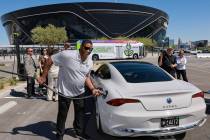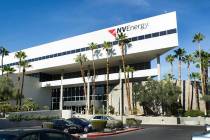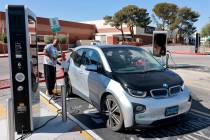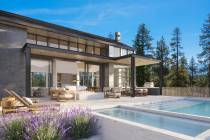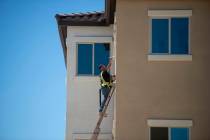Houses should be more like trees
Hiking is one of my favorite activities since I love reconnecting with the natural world. Safety is always No. 1 so I try to avoid paths that get too close to dangerous cliffs. Call it self-preservation. I'm also not a speed demon, preferring to savor the experience -- noticing the details.
Did you know that a ponderosa pine gives off a scent similar to butterscotch? You have to get real close to the bark and it works best on the sunny side of the tree. When you get that close, you start to realize that you're not just looking at a tree. It's a living system of inter-dependence that creates a habitat for numerous other species both large and small. And it happens naturally, all on its own.
Now imagine a tree that actually requires electricity or fossil fuel just to exist, that needs truckloads of food brought in from thousands of miles away, that could not function without extra water piped in from a distant source, and that sends waste to landfills and waterways. It's a ridiculous idea that would never exist in the real world. However, our homes and the rest of our built environment are almost exactly like that.
Let's reverse the scenario. Imagine a home that, like a tree, generates its own energy from the sun, that produces food, provides shelter, encourages biodiversity, eliminates waste and helps protect water resources. That's what I call practical!
I first learned about the concept of a home like a tree from renowned architect William McDonough. He and others like him envision a built environment that is an integrated and self-sustaining part of our world, something that doesn't just reduce our impact but actually reverses it. It is an idea whose time has come.
So why don't we build houses that function as well as trees? We could easily do it. The commoditization of the building industry is part of the problem. Like many of our modern systems of mass production, it suffers from a race to the bottom. Lowest price, fastest construction, maximum profit, deferred (environmental) costs. This formula for disaster has been the standard operating procedure for far too long. We could sure use some political will to create real honesty in the marketplace, eliminating the enormous, damaging environmental subsidies that are currently eroding the viability of future generations.
If we choose to "pay the truth" for the impact of our economic decisions, positive change will occur very rapidly. Not only would our homes begin to heal the environment, whole cities would be transformed into self-sustaining, urban ecosystems.
Take the concept of vertical farming, for example. There are many creative designs emerging for urban food production that would produce healthy, organic food with minimal inputs. Vertical farms eliminate long-distance, refrigerated trucking. They could use valuable nutrients that are currently treated as waste to provide fertilizer and energy. They would be extremely efficient with our precious water resources, recycling gray and black water, and even reclaiming water normally lost due to evapotranspiration from the plants.
With peak oil now a reality, lowering the energy intensity of our food supply is vitally important. As author James Howard Kunstler put it, "The days of the 3,000-mile Caesar salad will soon be over." We must incorporate efficient methods of local food production if our cities are ever to be sustainable. Buildings like trees -- cities like forests and fields. Perhaps then the real forest and fields could revert back to doing what they do best -- providing the natural planetary house-keeping services we all rely on for survival.
You might call this a utopian dream -- a green dream of sorts. I prefer to think of it as a common sense approach to solving many of our most pressing problems. It's the alternate path, the one that leads away from the cliff. Rather than risk going over the edge in a dangerous frenzy of consumer-driven development-at-all-costs, we can safely savor the experience of life by choosing the path of green living.
As always, there are links to additional information about the topics in this column, including Web sites, pictures and video, posted at www.greendream.biz. I encourage you to delve deeper and learn more about the many exciting possibilities for our future.
Steve Rypka is a green living consultant and president of GreenDream Enterprises, a company committed to helping people live lighter on the planet. Steve can be reached via e-mail at steve@greendream.biz. More information relating to this column is posted at www.greendream.biz.










